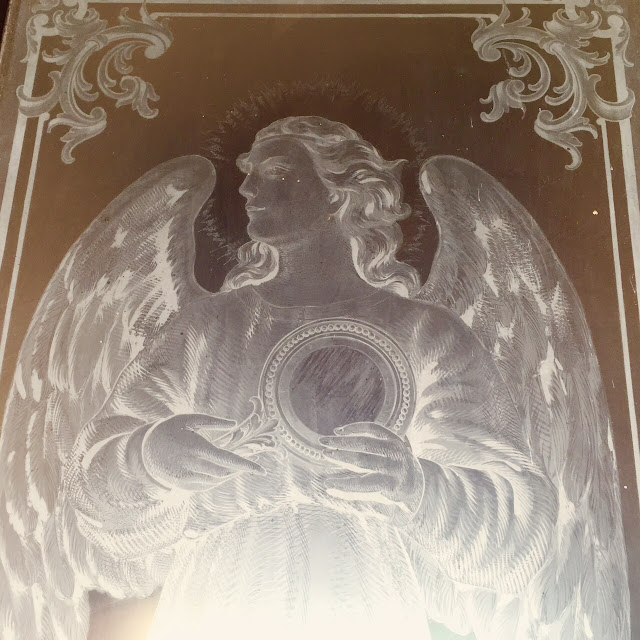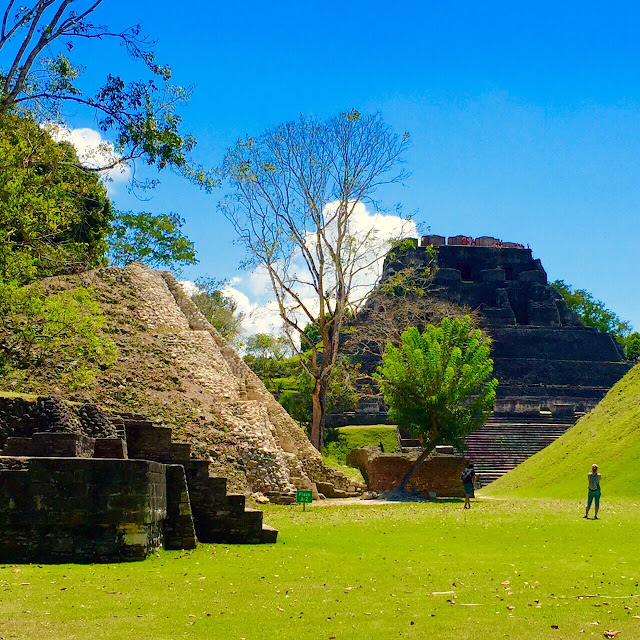 |
| Fiona, gazing pensively, on our last day in Mexico |
We made it home. We finished the journey. We're back in Jefferson, Oregon. And it wasn't easy ...
This trip has been amazing and wonderful. The goal was to begin on New Year's Day in Tierra del Fuego - at the very southern tip of South America - and drive home to Oregon. And we did it.
It's a very long distance - 14,617 miles. It took 82 days and we had to push hard to achieve that. Even though it was the trip of a lifetime, it turned out to be a real challenge.
It was a fantastic trip in so many ways, with views of places that would blow your mind. It was amazing to visit so many places that you often didn't even know existed.
I've enjoyed writing about our experience in this blog, along with pictures of the incredible places we visited. We had some great times ...
------------------------------------------
But ... we had a lot of problems on this trip.
I certainly didn't want to dwell on it, and I didn't mention it before in this blog - but now that we're done, I feel more comfortable talking about it.
------------------------------------------
But ... we had a lot of problems on this trip.
I certainly didn't want to dwell on it, and I didn't mention it before in this blog - but now that we're done, I feel more comfortable talking about it.
Fiona and I have traveled a lot but we experienced some real difficulties on this trip that were not common in our travels.
It started when our debit cards got hacked in early February. We frequently use these cards in ATM machines all over the world to get cash in the local currency. It's easy, and you get a favorable exchange rate.
But somehow, our card number and PIN got hijacked and were used repeatedly to withdraw cash from our bank account. This took place over a few days at many different banks, mostly in Peru. It was a lot of money.
Fortunately, we found out it before it got completely out of hand, and contacted our bank (not easy from where we were) and they immediately shut down the card.
Then it happened again twice more with other cards and they shut those down too. It was a big fraud problem. The serious issue with that is we had no way to get cash for the rest of our trip. It was a real problem from that point on, and we had a long way to go!
Of course we could use credit cards to pay for stuff, but that's often limited in the remote areas where we like to go. And to make matters worse, our American Express card was compromised with a bogus transaction, and it was quickly shut down by Amex, so that card didn't work anymore.
We were quickly running out of options. We still had a few tricks up our sleeve (maybe that's not the right phrase to use in this case!) but we were going to press on and try to make the best of it.
Then we had several things stolen. My computer and other electronics were stolen on a bus trip in Ecuador. And then, worst of all, the very next day my cherished new and expensive iPhone - which I used for so many pictures - was also stolen.
Once we hit the roads in the United States, we could really drive fast. Other than the roads in Chile, we could not cover ground quickly, so when we had the chance we pushed hard - and drove a thousand miles on the last day back to Oregon.
I captured this sunset on the way home.
It started when our debit cards got hacked in early February. We frequently use these cards in ATM machines all over the world to get cash in the local currency. It's easy, and you get a favorable exchange rate.
But somehow, our card number and PIN got hijacked and were used repeatedly to withdraw cash from our bank account. This took place over a few days at many different banks, mostly in Peru. It was a lot of money.
Fortunately, we found out it before it got completely out of hand, and contacted our bank (not easy from where we were) and they immediately shut down the card.
Then it happened again twice more with other cards and they shut those down too. It was a big fraud problem. The serious issue with that is we had no way to get cash for the rest of our trip. It was a real problem from that point on, and we had a long way to go!
Of course we could use credit cards to pay for stuff, but that's often limited in the remote areas where we like to go. And to make matters worse, our American Express card was compromised with a bogus transaction, and it was quickly shut down by Amex, so that card didn't work anymore.
We were quickly running out of options. We still had a few tricks up our sleeve (maybe that's not the right phrase to use in this case!) but we were going to press on and try to make the best of it.
It Gets Worse
Then we had several things stolen. My computer and other electronics were stolen on a bus trip in Ecuador. And then, worst of all, the very next day my cherished new and expensive iPhone - which I used for so many pictures - was also stolen.
I won't go into the details other than to say it was very disheartening, and rather demoralizing. We got pretty discouraged.
And to top it off my Google account got hacked. I couldn't access email, maps, pictures, even this blog! You name it, it was gone. And then Facebook got hijacked.
And to top it off my Google account got hacked. I couldn't access email, maps, pictures, even this blog! You name it, it was gone. And then Facebook got hijacked.
It is a real pain to get these things resolved when you're driving over a 10,000 foot peak in the Andes mountains. We were in remote places most of the time with no phone or internet access.
This all happened over the course of a few weeks. It was a war of attrition. Could we make it home before all our cards, devices, and money were gone? As it turns out, we got back to the States with thirteen dollars left.
But we made up our minds to complete the trip and it took some real determination to make that happen. And I don't want to make it sound like the whole trip was a bummer. It wasn't - but it sure was not easy.
-------------------------------------------
This all happened over the course of a few weeks. It was a war of attrition. Could we make it home before all our cards, devices, and money were gone? As it turns out, we got back to the States with thirteen dollars left.
But we made up our minds to complete the trip and it took some real determination to make that happen. And I don't want to make it sound like the whole trip was a bummer. It wasn't - but it sure was not easy.
-------------------------------------------
The other issue is that driving for fourteen thousand miles ... well ... it's not that fun. In fact it's really tough. It started out exciting. Patagonia was unbelievable, although the roads were dangerous.
But eventually the driving became a lot of work. The roads were often treacherous, and we drove a thousand miles on dirt roads.
One day we went 180 miles and it took twelve hours. It was really hard to make good time.
In addition, driving that much day after day after day, becomes a bit of a grind. I'm not sure I would want to do it again. It seemed like a good idea at the time, but looking back, it really wears you out.
--------------------------------------------
But I don't want to end on a negative note. I just wanted to give the other side of the story. Despite the many setbacks, we had a great time and it's one we will never forget.
And on the bright side, we we didn't get hurt. Looking back in fact, you might recall that when we started the trip Fiona had a broken arm. And amazingly, we didn't get in a collision (or worse), especially considering the crazy driving conditions.
And we were able to retain our passports the whole time. All in all, it was certainly a noteworthy trip. Something to tell the grandkids.
In addition, driving that much day after day after day, becomes a bit of a grind. I'm not sure I would want to do it again. It seemed like a good idea at the time, but looking back, it really wears you out.
--------------------------------------------
But I don't want to end on a negative note. I just wanted to give the other side of the story. Despite the many setbacks, we had a great time and it's one we will never forget.
And on the bright side, we we didn't get hurt. Looking back in fact, you might recall that when we started the trip Fiona had a broken arm. And amazingly, we didn't get in a collision (or worse), especially considering the crazy driving conditions.
And we were able to retain our passports the whole time. All in all, it was certainly a noteworthy trip. Something to tell the grandkids.
And when we got back to Oregon, of course it was raining, but rains makes good rainbows. Rather symbolic don't you think? The end of the rainbow?
One last Sunset
Once we hit the roads in the United States, we could really drive fast. Other than the roads in Chile, we could not cover ground quickly, so when we had the chance we pushed hard - and drove a thousand miles on the last day back to Oregon.
I captured this sunset on the way home.
















































